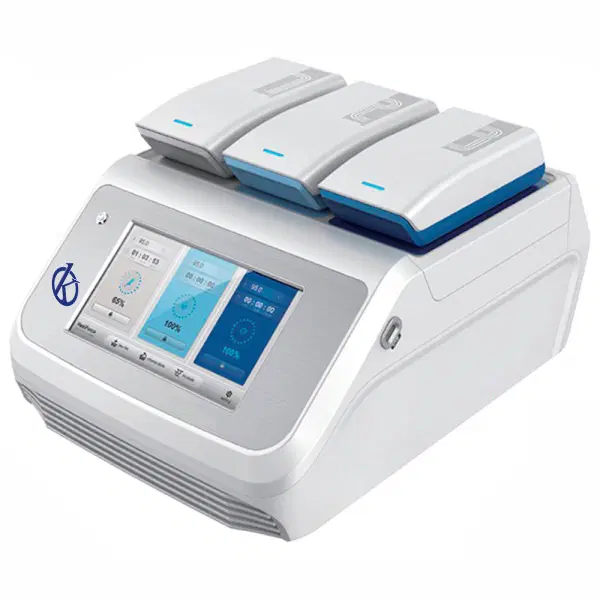The quantitative polymerase chain reaction is a useful tool for the detection, quantification and analysis of RNA and DNA; it is widely used as a tool for detecting viral infections and pathogens, as well as for clinical genetics studies and biological research, qPCR is carried out by a machine called a PCR thermal cycler.
The PCR thermal cycler uses a process called thermocyclization to amplify a specific DNA fragment during qPCR; to understand the dynamics of qPCR amplification, we must first understand the basics of the PCR thermal cycler; qPCR reactions are typically carried out in a PCR thermal cycler, which contains a plate with individual wells.
Polymerase chain reaction amplification process
Within each well, sample DNA, sample primers and dNTPs (dNTP = deoxyribonucleoside triphosphate), DNA polymerase and multiple buffers are mixed; once the cycle is initiated, the dNTPs bind to the primers, forming a primary DNA complex.
During the elongation reaction stage of the cycle, the enzyme DNA polymerase binds to the primary complex and begins to replicate it; this replication continues throughout the thermocycling cycles until a sufficient amount of DNA is achieved for quantitative detection.
Thermocyclization steps in the polymerase amplification cycle
During the thermocycling process, the PCR thermal cycler switches between several temperatures; each set for a particular stage in the cycle; these stages are denaturation, hybridization and elongation; denaturation involves bringing the temperature of the well to a very high temperature, which allows the primers to bind to the sample DNA.
Once separated, the primers and dNTPs bind to form the primary complex; the hybridization stage involves a low temperature at which the primary complex binds to the DNA polymerase for elongation; during the elongation stage, the temperature increases and the enzyme begins to replicate the DNA until the cycle is complete.
Thermocycling continues until the desired amplification is achieved
Under optimal conditions, one thermocycling cycle can amplify the DNA in the sample by up to 1,000,000 times, this means that a DNA fragment of only one base pair can be amplified to such an extent that it can be recognized, detected and quantified with a sufficiently sensitive technique.
Due to the high sensitivity, efficiency and speed, the PCR Thermalcycler has become one of the main diagnostic and monitoring tools in medicine, clinical diagnostics and life sciences.
The PCR Thermocycler is an invaluable tool for RNA and DNA analysis and detection, especially when high sensitivity or quantitative analysis is needed
The thermocycling process controls the temperature, allowing the qPCR cycle to be carried out to achieve amplification of the sample DNA fragment to a chemically detectable level.
In summary; looking at all the benefits offered by qPCR and the PCR thermal cycler, it can be argued that understanding the dynamics of qPCR amplification is a vital step in improving detection, sensitivity and speed in the diagnosis and monitoring of multiple biological processes.
For Kalstein as a FABRICANT company, it is of utmost importance that scientists acquire very good quality and low cost thermal cyclers for their research
That is why in Kalstein you can acquire the best thermal cyclers, just visit our website HERE to enjoy great deals and unbeatable prices, because we are MANUFACTURERS and we can guarantee your effective purchase.
In the same way; you will be able to obtain sophisticated and first quality equipment in relation to the thermal cyclers just by clicking on the following link HERE


